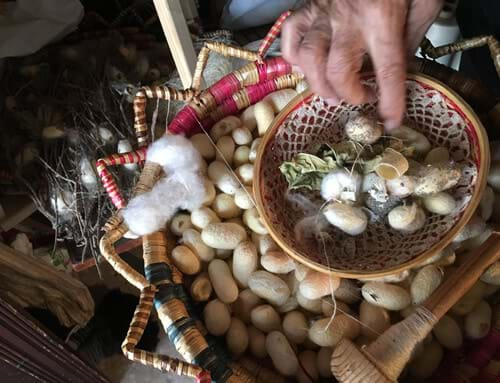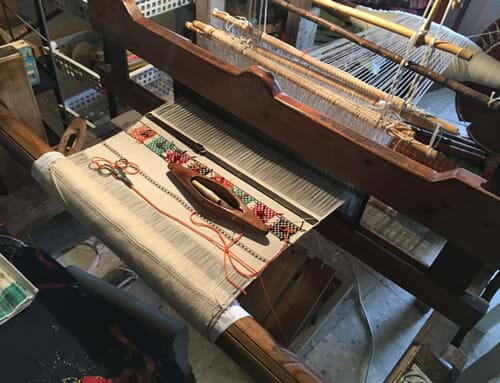Fythkiotika is a kind of woven fabric named after the village of Fyti in the Pafos district of Cyprus. Over hundreds of years, weavers in this village and nine others nearby developed a tradition of weaving cotton yarn on a loom. Embroidered into the fabric are colourful, abstract patterns known as ploumia. Traditionally, the weavers cultivated the cotton, prepared it for weaving by removing the seeds in a cotton gin, and turned it into yarn before placing it on the loom. The tradition is thought to date to the Middle Ages and the era of Lusignan rule on the island. Now you can see fythkiotika being made at the Fyti Weaving Museum. Weaver Eirini Diomedous will show you her book of ploumia patterns and demonstrate how she creates the geometric designs on her looms. She can also show you how she makes thread from silkworm cocoons. A wide range of woven fabrics, including fythkiotika and crochet, is available for sale at the museum. Although fabric from Fyti was traded widely across the island as recently as in the 1950s, today demand is low, so the practice is carried on by just a few weavers from the village. This weaving tradition has been recorded by the Cyprus Handicraft Service, which also continues to train weavers so that the tradition does not die. Fythkiotika is also protected by UNESCO through its Inventory of the Intangible Cultural Heritage of Cyprus.

